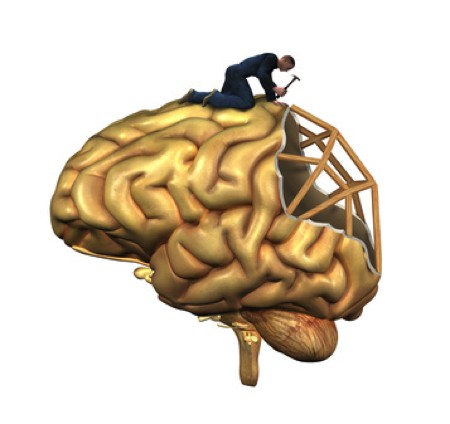By Justine Buckley
Have you ever wondered what your brain is doing when you can't stop worrying, or a bad habit keeps winning? Or why it might matter to understand this a little?
In his book 'The Brain that Changes Itself", Norman Doidge describes the brain as changeable and modifiable, like plastic. In fact our brain is so plastic, so impressionable that whatever we do, think or even imagine affects neural pathways in our brain instantly. This brain property is called 'neuroplasticity'. Think of the implications! The more we give in to worry, a compulsion, to jealousy or chew our fingernails or react impulsively - literally the more 'stuck' our brain gets. Every activity we do strengthens the wires for that activity in the brain. It gets kookier... a habit's 'circuitry' then competes for space on a brain 'map'. Well established behaviours do indeed dominate and we become more rigid.
There is good news though! Every time we consciously shift our attention from worrying (or a bad habit) and do a wholesome practice like Doko describes - we actually 'grow' new brain circuits & neural connections! How rad is that! Regular practice then stabilizes the circuitry for this good habit in our brain... now a good habit is established and a bad habit has withered away (neurologically speaking). Most importantly, the attentional system in our brain has been strengthened in the process so we become free to put our attention where we choose - not where habit dictates!
I like a 'how to' and so will share with you this month an approach originally designed by Dr J. Schwartz to help people with obsessive-compulsive disorder (OCD). Because it is based on mindfulness and neuroplasticity this method helps tame garden variety obsessions, worries and bad habits as well. And this practice cultivates awareness, stable attention and a more relaxed self! If you really practice these four steps - you will undo your compulsions and rewire your brain, for a little more ease! This is how mindfulness practices start our brain working with us, instead of against us.
Step 1. Re-label
Step back and label whats happening (e.g. OCD attack, not an attack of germs). Don't believe what your brain is telling you - the content or story. (The capacity to 'step back' from feelings, thoughts or compulsions is KEY to successfully changing our brains. Practice stepping back again and again. This is awareness or noticing - Schwarz calls it developing 'third party awareness').
Step 2. Re-attribute
Know that faulty brain circuitry is dictating things right now and that some new helpful circuitry needs to be created. Knowing you've got to 'rewire' your brain helps you step back even more from urges and develops equanimity... (Doko calls this an attitude of 'no-fuss').
Step 3. Re-focus
Re-focus! Consciously, 'manually', turn your attention away from the unhealthy thoughts and urges onto a constructive, wholesome behaviour... do something else (like Doko's practice), even while the urges or feelings are still bothering you!
Step 4. Re-value (commit to the first 3 steps then you get to step 4)
When you notice compulsions fading - reinforce what you value and don't value by recalling that those obsessions are 'worthless distractions' to be ignored.
Resources
1)"The Brain that Changes Itself" by Norman Doidge (2007)
2)"Changing Your Mind", a documentary of the book currently on SBS On Demand, viewing expires 8 April 2014.
3)"Brain Lock" by Jeffrey M. Schwartz
4)Excellent article applying this to daily life http://www.psychologytoday.com/blog/use-your-mind-change-your-brain/201106/you-are-not-your-brain


